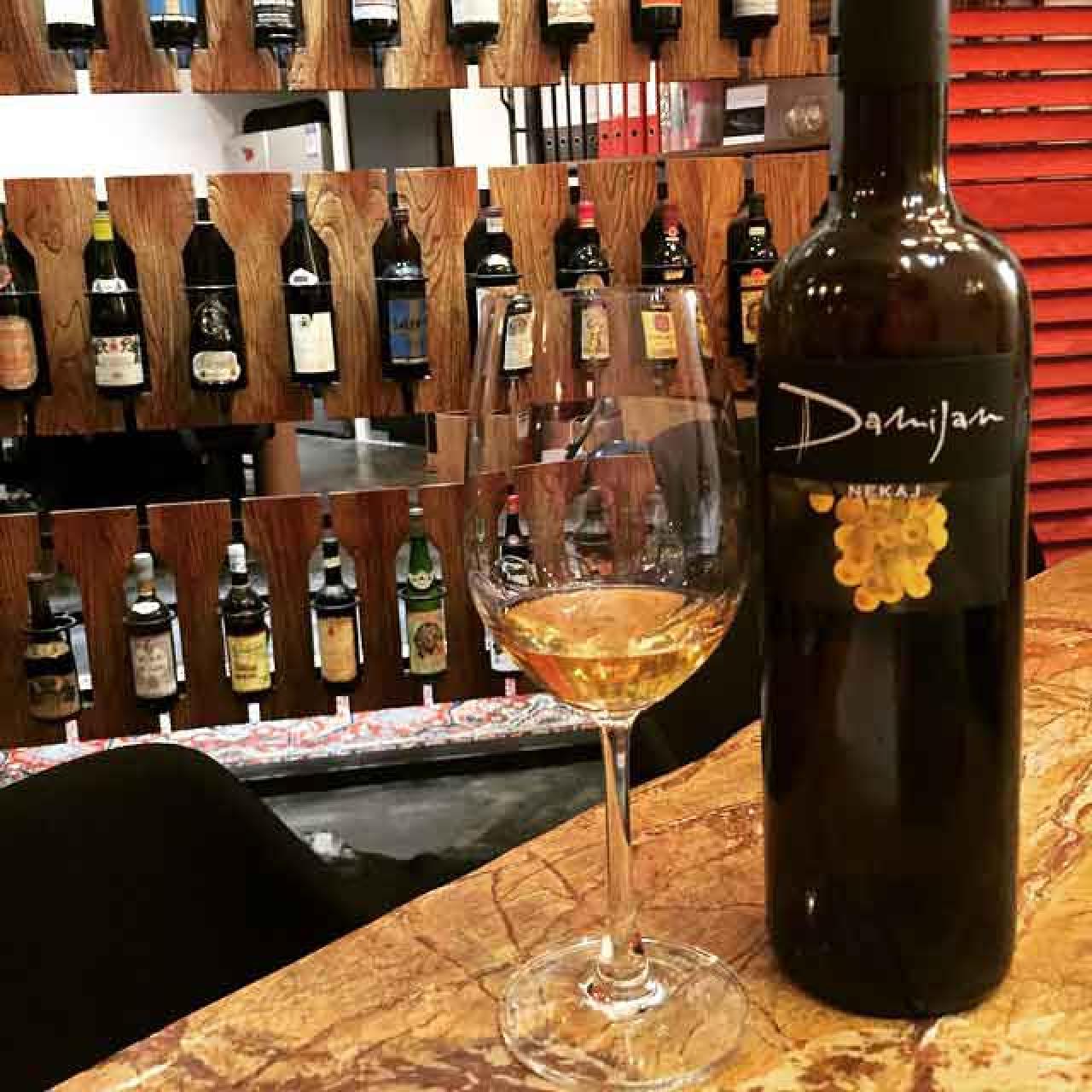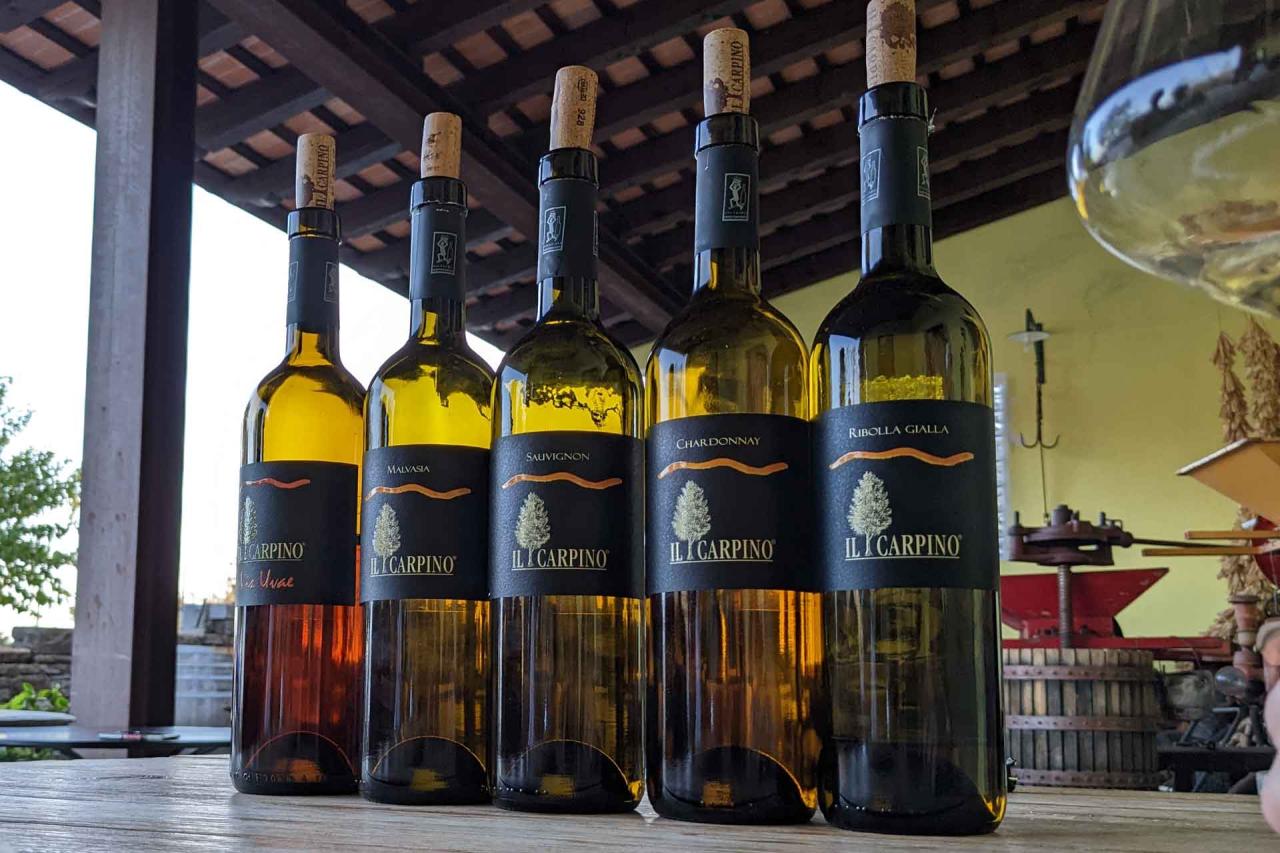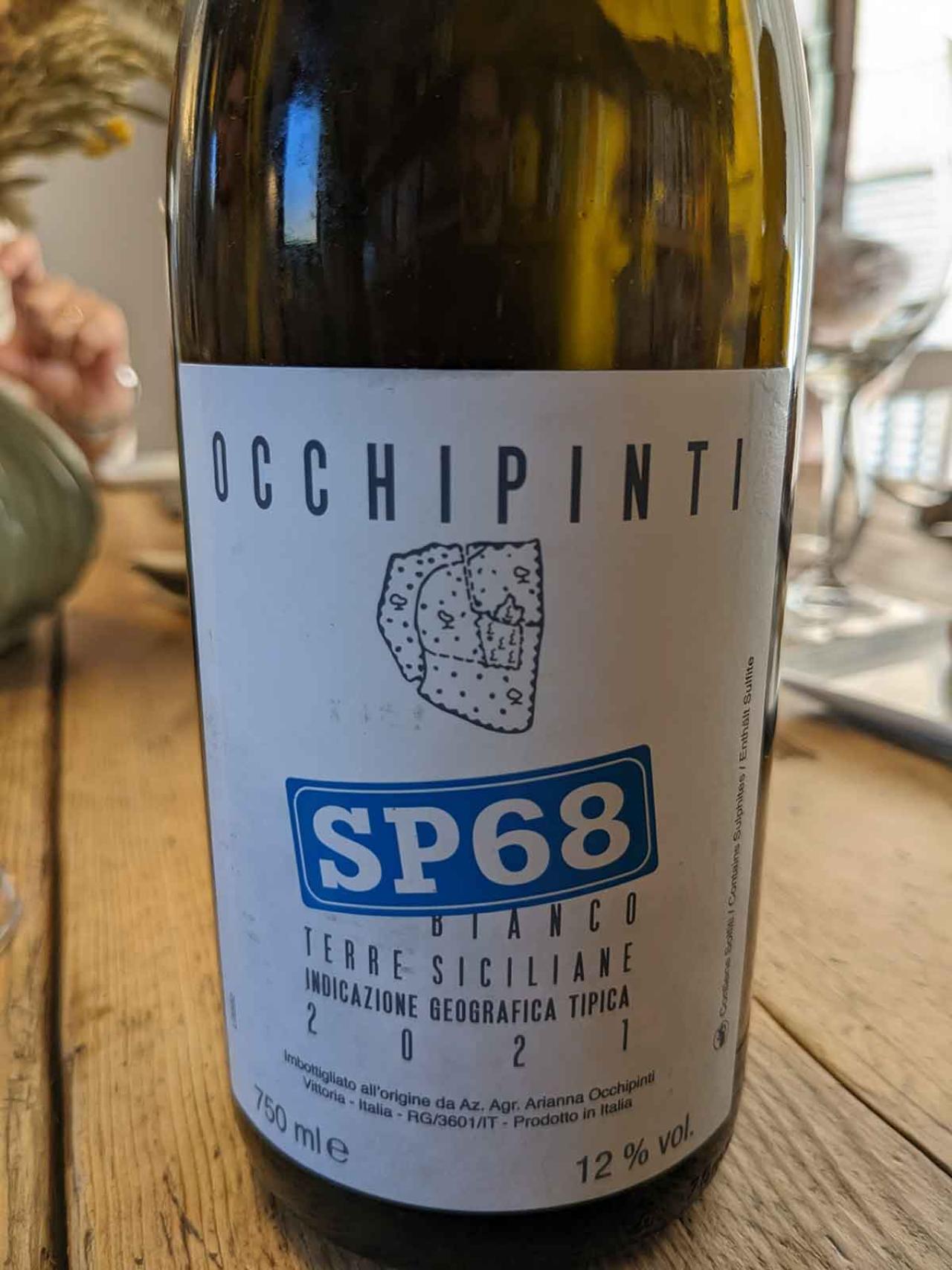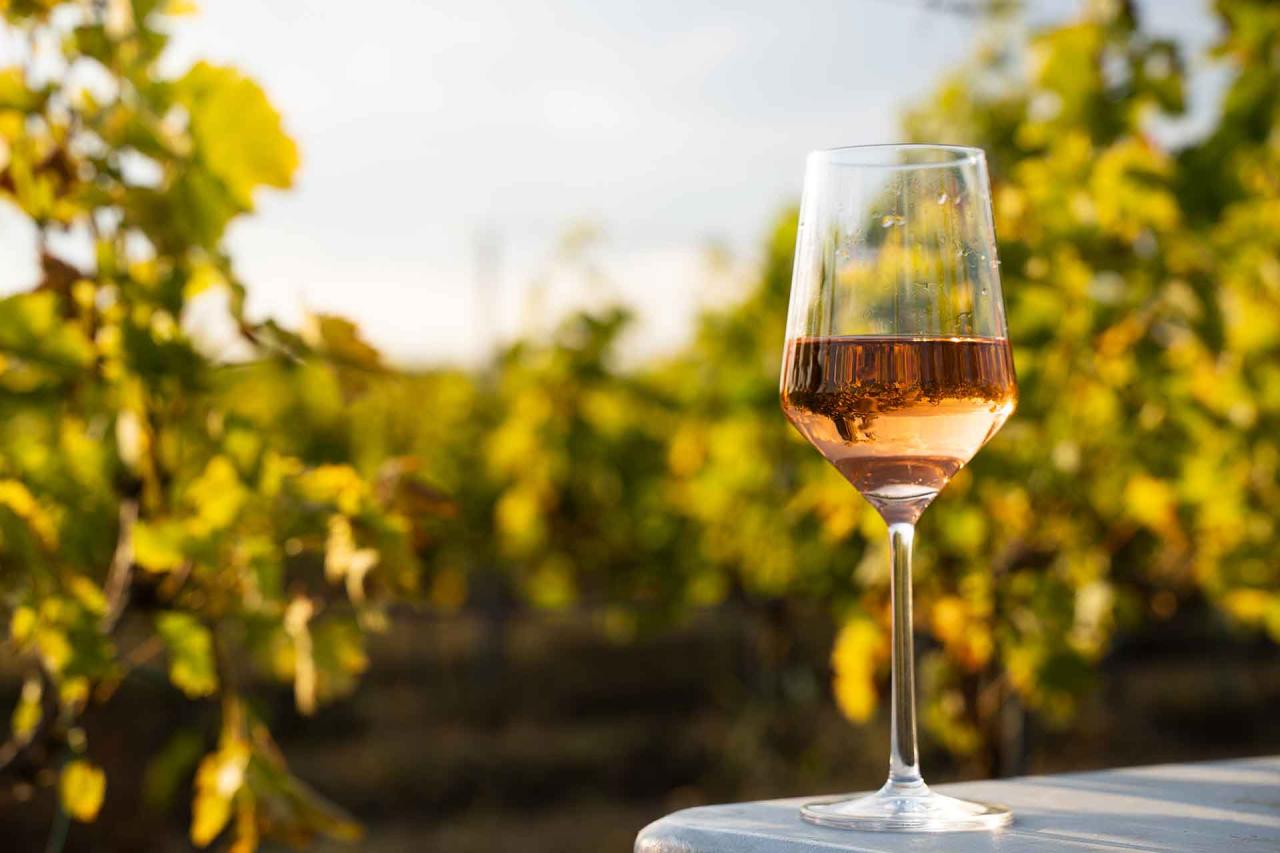The trend of orange wines is recent but the techniques adopted are very ancient and come from Georgia, even if they fell into disuse until the early nineties when a small group of expert winemakers recovered them. The real pioneer of this renewed genre is Italian and his name is Josko Gravner. Since then, in Italy orange wine has become very popular throughout the peninsula.
Here we will tell you everything you need to know about Italian orange wine, its history, the most interesting producers, and the bottles not to be missed.
Get updates on the latest posts and more from Wine Bugle straight to your inbox.
History of Italian orange wine
In Italy, until the 1970s, winemaking techniques and cellar equipment were often outdated and it was easy to come across white wines with a pronounced oxidized character. However, these wines had nothing to do with orange wines as we know them today but were rather the result of wrong vinification techniques.
Today, however, producing orange wine is a stylistic choice, connected to the recovery of ancient traditions that had been lost over the centuries.
The real initiator of this new movement of orange wine Italian-style is Josko Gravner, a wine producer of the Friulian Collio, who after a trip to Georgia decided to experiment with the ancient Georgian technique of Qvevri (underground terracotta amphorae) on his Ribolla Gialla.
The results were so interesting that many other producers gradually began to use the same methods, starting with Angiolino Maule and Daniele Piccin in Veneto, so much so that, for orange wines Italy has today become one of the reference countries.
How to recognize a bottle of orange Italian wine?
First of all, don't expect the name 'orange wine Italy' on the label. These wines are labeled as white wines (‘Bianco’ in Italian).
Furthermore, their color is not always orange but will depend on the skin tone and the maceration period: it can vary from deep golden with amber reflections, to intense amber up to orange.
The trick is to look for the word 'amphora' on the back of the label. This will indicate that the wine has undergone an "orange vinification" and has been aged in a terracotta amphora.
Orange wine from Italy
Friuli
Skerk
Sandi Skerk is one of the most important figures of Italian artisan enology and his wines, characterized by long macerations and equally long refinements, are unique, natural, and deeply territorial.
His Vitovska is spontaneously fermented in open wooden barrels, macerated on the skins, and left to refine without clarification and filtration for at least 12 months in large barrels. It has vegetal notes of fern, eucalyptus, aromatic herbs, and green tea leaves followed by aromas of beeswax, wildflower honey, and lime blossom. It is deeply intense in flavor, fresh, and with a slight tannic perception.

Podversic
Located on the hills of the province of Gorizia, the Damijan Podversic winery cultivates native varieties such as Ribolla Gialla, Istrian Malvasia, and Friulano, as well as Chardonnay, Merlot, and Cabernet Sauvignon. The vinification, carried out entirely in wood, follows the lunar phases, slow rhythms, and tradition, with prolonged contact between the skins and the must, until the end of fermentation.
Ribolla Gialla by Damijan Podversic is an organic and biodynamic wine, with intense hints of yellow fruit, mineral, and ethereal. On the palate, it is savory, elegant and refined, delicately tannic, and very persistent.

Il Carpino
Founded in 1987, the family winery Il Carpino is led by Franco and Anna Sosol, assisted by their sons Manuel and Naike. The vineyards are scattered between Coliio and Isonzo while the winery is located on the border with Slovenia.
Malvasia by Il Carpino is an orange wine Italian-style, sensual and enveloping, which stands out for its great finesse. The nose recalls apricot in syrup, medicinal herbs, honey, and cinnamon. In the mouth, the wine is soft, but like all great wines, it balances the sweetness of the fruit with a punctual saline contribution.
Trentino Alto Adige
Elisabetta Foradori
Winemaker since 1984, Elisabetta Foradori soon became one of the most influential women of wine in Italy, nicknamed 'the lady of Teroldego' for having contributed to the revaluation of this native vine.
Her Fuoripista Pinot Grigio comes from the collaboration with Marco Devigli, biodynamic oenologist from Campo Rotaliano. The slow microoxygenation of the amphorae's clay ensures that the skins give the must the best of aromas and properties. It is a wine with typical macerated and licorice scents, with spicy and slightly floral notes. On the palate, it is warm, quite savory, mineral, and with slightly velvety tannin.
Lieselehof
Located in Caldaro, the Lieselehof winery is owned by Werner Morandell, known for his philosophy based on respect for nature. His first attempts at organic production date back to 1993, and starting from 2002 the research in defense of the environment was intensified with the planting of Piwi vines.
The Julian Orange wine from the Lieselehof winery ferments spontaneously, macerates on the skins for 3 weeks. and ages in oak for one year. It is an aromatic Italian orange wine, slightly tannic, full-bodied, and spicy, with an elegant, soft, and decisive character.
Emilia-Romagna
La Stoppa
Located in the Piacentino area, La Stoppa is an ancient winery that already in the 1980s opted for the production of traditional wines using only indigenous yeasts and practicing long macerations.
Their Ageno is a white wine that pays homage, with its name, to the old owner of the winery who was the first to believe in the enological potential of the area. It has an elegant peaty amber color and a complex aromatic profile with hints of tea, karkadè, intriguing oxidative references, jam, caramel, and oriental spices.
Toscana
Cosimo Maria Masini
The Cosimo Maria Masini vineyards are located in San Miniato in the province of Pisa. Here, the local grapes Vermentino, Sangiovese, Trebbiano, Malvasia, San Colombano, and the rare Sanforte benefit from favorable climatic conditions and a terroir rich in fossil remains suitable for vines. In the cellar, natural yeasts are used to ensure that all the grapes’ characteristics are present in the wine.
Its Daphné is the result of long research carried out on the maceration of the grapes, to express the best of the potential of Trebbiano and Malvasia Bianca. It is a mineral and voluminous wine with floral aromas and herbaceous nuances.
La Maliosa
La Maliosa is located in the hilly Maremma, near the thermal town of Saturnia. La Maliosa obtained organic certification in 2010 and vegan certification in 2015, testifying to a serious and concrete commitment to work in full respect of the environment.
Maliosa UNI is a white wine made from Procanico grapes that macerates on the skins for 4 weeks and is aged in wood. It is a rich and complex amber wine with intense aromas of ripe fruit, flowers, sweet spice, and great versatility in food pairings.
Campania
Pierluigi Zampaglione
Located in Calitri, on the Irpinia hills, Pierluigi Zampaglione's winery was one of the first in the south to use organic farming. The vineyards are spread over three different plots and offer different characteristics in the soil composition. The work in the vineyard and the cellar is aimed at enhancing the territory and the grape variety.
Their Don Chisciotte is a pure and unfiltered Fiano, characterized by a long maceration on the skins and the exclusive use of indigenous yeasts. It is a wine of great character and personality, which expresses the passion and commitment of the Zampaglione family.
Sicilia

Arianna Occhipinti
Arianna Occhipinti's relationship with her land is marked by a deep love. Graduated in Viticulture and Oenology in Milan, she immediately went back to Sicily and created her winery, in the Fossa di Lupo and Piraino districts in the province of Ragusa, where she cultivates the typical vines of the area, in a natural agricultural regime.
SP68 Bianco is a white wine capable of expressing the richness and personality of Sicily. It comes from native grapes macerated on the skins and expresses aromas of fruit, citrus fruits, aromatic and balsamic herbs, and an intense and flavorful taste.
Cos
Founded in 1980 by three young friends, Giambattista Cilia, Cirino Strano, and Giusto Occhipinti, the COS winery follows the precepts of biodynamics, cultivating 30 hectares, mostly in Vittoria, where local native vines such as Zibibbo, Nero d'Avola, Frappato, Grecanico, and Inzolia proliferate.
Zibibbo in Pithos comes from 100% Zibibbo grapes fermented in terracotta amphorae, where the must will remain for maceration and aging, for about 6-7 months. It is an intensely aromatic, sunny, rich, and fresh wine that tastes of apricot, candied orange peel, iodine, and dried fruit.
Sardegna
Alessandro Dettori
Located in Sennori, in the province of Sassari, the winery of Alessandro Dettori over the years has established itself as the protagonist of the oenological renaissance of Sardinia. Here he grows the most traditional varieties of this territory (Vermentino, Cannonau, Monica, Pascale, and Moscato) from vineyards that are even centuries old.
Dettori Bianco is a complex and intense wine that ferments spontaneously and macerates in concrete for 3/4 days. It is overwhelmingly delicious, full-bodied, and perfectly balanced between flavor and body.
Conclusions
If we have made you thirsty for Italian orange wine, well, now it’s the time to buy a good bottle and explore the plethora of aromas and flavors these wines have to offer! Enjoy!

